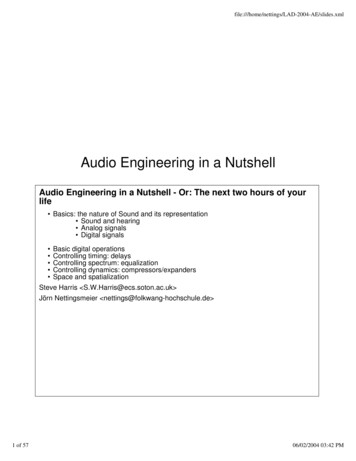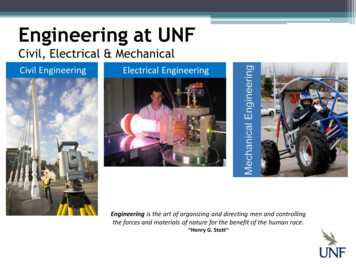
Transcription
CURRICULUMDIPLOMAComputer Engineering(Three Years Program- Semester System)Council for Technical Education and Vocational TrainingCurriculum Development DivisionSanothimi, BhaktapurDeveloped 2001First Revision 2002Second Revision 2010Third Revision 2018
Table of ContentsINTRODUCTIONCURRICULUM TITLE:AIMOBJECTIVESGROUP SIZEENTRY CRITERIADURATIONMEDIUM OF INSTRUCTIONPATTERN OF ATTENDANCETEACHERS AND STUDENTS RATIOQUALIFICATION OF TEACHERS AND INSTRUCTORSINSTRUCTIONAL MEDIA AND MATERIALSTEACHING LEARNING METHODOLOGIESMODE OF EDUCATIONEXAMINATION AND MARKING SCHEMEPROVISION OF BACK PAPERDISCIPLINARY AND ETHICAL REQUIREMENTSGRADING SYSTEMCERTIFICATION AND DEGREE AWARDS:CAREER OPPORTUNITYSUBJECTS CODESPROVISION OF SPECIALIZATION:COURSE STRUCTUREFIRST YEARFIRST SEMESTERCOMMUNICATION NEPALICOMMUNICATION ENGLISHENGINEERING MATHEMATICS IENGINEERING PHYSICS IENGINEERING CHEMISTRY ICOMPUTER FUNDAMENTALSENGINEERING DRAWINGCOMPUTER PROGRAMMING IN CSECOND SEMESTERENGINEERING MATHEMATICS IIENGINEERING PHYSICS IIENGINEERING CHEMISTRY IIOBJECT ORIENTED PROGRAMMING IN C ELECTRICAL ENGINEERINGWEB TECHNOLOGY AND PROGRAMMING ITHIRD SEMESTERWEB TECHNOLOGY AND PROGRAMMING IIENGINEERING MATHEMATICS IIIDATA STRUCTURES AND ALGORITHMDATABASE MANAGEMENT SYSTEMSMICROPROCESSORELECTRONIC DEVICES AND CIRCUITSFOURTH SEMESTERDATA COMMUNICATIONSYSTEM ANALYSIS AND 243465160646772737779828487919295
VISUAL PROGRAMMINGCOMPUTER ARCHITECTURECOMPUTER REPAIR AND MAINTENANCECOMPUTER GRAPHICSSTATISTICS AND PROBABILITYFIFTH SEMESTERCOMPUTER NETWORKSMANAGEMENT INFORMATION SYSTEMAPPLIED TELECOMMUNICATIONDISTRIBUTED COMPUTINGOPERATING SYSTEMSCYBER SECURITY AND PROFESSIONAL ETHICSGEOGRAPHICAL INFORMATION SYSTEMCOMPUTER SIMULATION AND MODELINGJAVA PROGRAMMINGMINOR PROJECTSIXTH SEMESTERMULTIMEDIA TECHNOLOGYINTERNET TECHNOLOGYDATA MININGSOFTWARE ENGINEERINGE-GOVERNANCEE-COMMERCEEMBEDDED SYSTEMMAJOR 3145146147150153156160164168173
IntroductionThis three years Diploma in Computer Engineering curriculum is designed to produce middle levelskilled technician updated with latest skills of computer and information technology with a view tocope with the emerging technological change. Many people in the developed, developing and underdeveloped countries have been given emphasis for the broader application of computer. ComputerEngineering has been contributing the world for the overall development and creating job oremployment opportunities in both public and private sectors.This curriculum is designed to foster knowledge and skills to the technician required by the computerengineering and information technology related industries and organizations in Nepal. The Diplomain Computer Engineering program extends over three years. Each year is divided into two semesters.There are six semesters in total within the period of three years.The first year courses includes the basic science subjects like physics, chemistry, and mathematicsapplicable in the field of computer Engineering. It also includes language subjects like Nepali andEnglish applicable for the communication in the field of computer engineering and informationtechnology. The second year courses focuses on the basic disciplinary subjects of computerengineering. Similarly, third year courses comprises of the disciplinary subjects and the applicationof learned skills and knowledge by making the provision of major and minor projects as well aselective subjects in the specific areas of computer engineering.The course structure and the subject-wise contents that follow reflect the details of this curriculum.In short, this curriculum guides its implementers to produce competent and highly employablemiddle level technical human resources in the field of computer engineering.The contents of each subjects prescribed in the curriculum are incorporated in the light of "must toknow and must to do" principle. The contents of the curriculum are minutely describes in microlevel.Curriculum Title:Diploma in Computer EngineeringAimThe program aims to produce middle level technical personnel in the field of computer with soundacademic knowledge equipped with perfect technical skills that can be faced in real life situation.ObjectivesAfter the completion of this program, the graduates will be enabled to:- Prepare competent computer workforce/human resources that could provide services inpublic and private organizations as required- Handle Web Technology & Programming, Management Information System, SystemAnalysis and Design, Visual Programming, Multimedia Technology, Internet Technology,Data Mining, Computer Graphics etc.- Management of Database- Repair and Maintenance of Computer
-Applied Telecommunication skillsPrepare such technical workforce who will demonstrate positive attitude and respect to theprofession and socio-cultural values.Reduce the dependence on foreign technicians.Create self employment/enterprise.Group SizeThe group size will be maximum of 48 (forty eight) students in a batch.Entry Criteria SLC Pass or SEE with minimum C grade in Compulsory Mathematics & Science and D in English.TSLC in Computer Engineering with minimum 67.00%.Should pass entrance examination as administered by CTEVT.DurationThe total duration of this curricular program is three academic years (six semester). The program isbased on semester system. Moreover, one semester year consists of 19.5 academic weeks includingevaluation period. Actual teaching learning hours will be not less than 15 weeks in each semester.Medium of InstructionThe medium of instruction will be in English and/or Nepali.Pattern of AttendanceMinimum of 90% attendance in each subject is required to appear in the respective final examination.Teachers and Students RatioThe ratio between teachers and students must be: Overall ratio of teacher and student must be 1:12 (at the institution level) 1:48 for theory and tutorial classes 1:12 for practical/demonstration 1:6 for bench work 75 % of the technical teachers must be full timerQualification of Teachers and Instructors The program coordinator should be a master's degree holder in the related area.The disciplinary subject related teacher and demonstrators should be a bachelor’s degreeholder in the related area.The foundational subject related teacher should be master degree holder in the related area.Instructional Media and MaterialsThe following instructional media and materials are suggested for the effective instruction anddemonstration. Printed Media Materials (Assignment sheets, Hand-outs, Information sheets, Individualtraining packets, Procedure sheets, Performance check lists, Textbooks etc.). Non-projected Media Materials (Display, Flip chart, Poster, Writing board etc.). Projected Media Materials (Opaque projections, multimedia, Slides etc.). Computer-Based Instructional Materials (Computer-based training, Interactive video etc.)
Teaching Learning MethodologiesThe methods of teachings for this curricular program will be a combination of several approachessuch as; lecture, illustrated talk, tutorial, group discussion, demonstration, simulation, guidedpractice, self-practice, fieldwork, block study, industrial practice, report writing, term paperpresentation, heuristic and other independent learning exercises.Theory: Lecture, discussion, assignment, interaction, seminar, group work.Practical: Demonstration, observation, simulation, guided practice, self-practice, industrial practiceand project work.Mode of EducationThere will be inductive and deductive mode of education.Examination and Marking Schemea. Internal assessment There will be a transparent/fair evaluation system for each subject both in theory andpractical exposure. Each subject will have internal assessment at regular intervals and students will get thefeedback about it. Weightage of theory and practical marks are mentioned in course structure. Continuous assessment format will be developed and applied by the evaluators forevaluating student's performance in the subjects related to the practical experience.b. Final examination Weightage of theory and practical marks are mentioned in course structure. Students must pass in all subjects both in theory and practical for certification. If astudent becomes unable to succeed in any subject, s/he will appear in the re-examinationadministered by CTEVT. Students will be allowed to appear in the final examination only after completing theinternal assessment requirements.c. Requirement for final practical examination Professional of relevant subject instructor must evaluate final practical examinations. One evaluator in one setting can evaluate not more than 24 students. Practical examination should be administered in actual situation on relevant subject withthe provision of at least one internal evaluator from the concerned or affiliating instituteled by external evaluator nominated by CTEVT. Provision of re-examination will be as per CTEVT policy.d. Final practicum evaluation will be based on: Institutional practicum attendance - 10% Logbook/Practicum book maintenance - 10% Spot performance (assigned task/practicum measurement) - 40% Viva voce :– Internal examiner - 20%– External examiner - 20%e. Pass marks: The students must secure minimum 40% marks in both theory and practical. Moreover,the students must secure minimum pass marks in the internal assessment and in thesemester final examination of each subject to pass the subject.
Provision of Back PaperThere will be the provision of back paper but a student must pass all the subjects of all semesterwithin six years from the enrollment date; however there should be provision of chance exam forfinal semester students as per CTEVT rules.Disciplinary and Ethical Requirements Intoxication, insubordination or rudeness to peers will result in immediate suspensionfollowed by the review of the disciplinary review committee of the institute.Dishonesty in academic or practical activities will result in immediate suspension followedby administrative review, with possible expulsion.Illicit drug use, bearing arms in institute, threats or assaults to peers, faculty or staff willresult in immediate suspension, followed by administrative review with possible expulsion.Grading SystemThe following grading system will be adopted: Distinction: 80% and above First division: 65% to below 80% Second division: 50 % to below 65% Pass division: Pass marks to Below 50%Certification and degree awards: Students who have passed all the components of all subjects of all 6 semester are consideredto have successfully completed the program.Students who have successfully completed the program will be awarded with a degree of"Diploma in Computer Engineering".Career OpportunityThe graduates will be eligible for the position equivalent to Non-gazette 1st class/Level 5(technical) as prescribed by the Public Service Commission of Nepal and other related agencies.The graduate will be eligible for registration with the related professional council in the grade asprovisioned in the related Council Act (if any).
Subjects CodesEach subject is coded with a unique number preceded and followed by certain letters as mentionedin following chart:Offering Departments:AR: ArchitectureEGXXXXXXEE: Electrical EngineeringME: Mechanical EngineeringEX: Electronics EngineeringCourse Serial NumberSemesterCT: Computer EngineeringCE: Civil EngineeringSH: Science and HumanitiesYearMG: ManagementSH: Science and HumanitiesEngineeringProvision of specialization:There will be no provision of specialization but some subjects are offered here as the electivesubjects; viz Geographical Information System, Computer Simulation and Modeling, JavaPrograming, E-governance, E-commerce and embedded system.
Course Structure(Diploma in Computer Engineering)Year: ISemester: ITeaching ScheduleS. N.CourseCode12345678EG 1101 SHEG 1102 SHEG 1103 SHEG 1104 SHEG 1105 SHEG 1107 CTEG 1104 AREG 1109 CTDistribution of MarksModeSubject TitleL22433313Communication NepaliCommunication EnglishEngineering Mathematics IEngineering Physics IEngineering Chemistry IComputer FundamentalsEngineering DrawingComputer Programming in .51.53333439120440310103060301010204020140100Year: 800Semester: IITeaching ScheduleS. N.22343RemarksTotalMarksCourse CodeEG 1201 SHEG 1202 SHEG 1203 SHEG 1211 CTEG 1205 CTEG 1207 EEEG 1215 CTDistribution of MarksModeSubject TitleEngineering Mathematics IIEngineering Physics IIEngineering Chemistry IIDigital LogicObject Oriented Programming with C Electrical EngineeringWeb Technology & Programming ousAssessment
Semester: IIIYear: IITeaching ScheduleS. N.Course CodeDistribution of MarksModeSubject 150LTPWeb Technology & Programming II313Engineering Mathematics III311LabTotalHoursPracticalFinalExamTotal1EG 2101 CT2EG 2104 SH3EG 2105 CTData Structure & Algorithm34EG 2107 CTDatabase Management System313720803302031505EG 2107 EXMicroprocessors313720803302031506EG 2108 EXElectronic Devices & ontinuousAssessment150850Semester: IVYear: IITeaching ScheduleS. N.150Course CodeDistribution of MarksModeSubject Hours137208033020Total1EG 2211 EXData Communication331502EG 2212 CTSystem Analysis and Design23520803302031503EG 2213 CTVisual Programming33620803302031504EG 2214 CTComputer Architecture33620803302031505EG 2215 CTComputer Repair & Maintenance33620803302031506EG 2216 CTComputer Graphics23510401.5507EG 2207 SHStatistics & ontinuousAssessment
Semester: VYear: IIITeaching ScheduleS. N.Course CodeDistribution of MarksModeSubject HoursComputer Networks3362080330203150Management Information System3252060310102100Applied Telecommunication3362080330203150Distributed Computing3362080330203150EG 3114 CTOperating System3362080330203150EG 3115 CTCyber Security and Social Ethics2210401.5---50EG 3116 CTElective – I (any one)4720803302031501EG 3101 CT2EG 3111 CT3EG 3112 CT4EG 3113 CT5673(a) Geographical Information System0(b) Computer Simulation and Modeling0EG 3117 CTMinor : VIYear: IIITeaching ScheduleS. N.Course CodeSubject TitleDistribution of ks30Marks20Hours31501EG 3201 CTMultimedia Technology3137Marks202EG 3211 CTInternet Technology31372060310102100345EG 3212 CTEG 3213 CTEG 3214 CTData MiningSoftware EngineeringElective - 0(e) E-Governance0(f) E-commerce0(g )Embedded System6ContinuousAssessment0(c) Java Programming8TotalEG 3215 CT0Major uousAssessment
First Year(First and Second Semesters)12
First SemesterSubjects:1EG 1101 SHCommunication Nepali2EG 1102 SHCommunication English3EG 1103 SHEngineering Mathematics I4EG 1104 SHEngineering Physics I5EG 1105 SHEngineering Chemistry I6EG 1107 CTComputer Fundamentals7EG 1104 AREngineering Drawing8EG 1109 CTComputer Programming in C13
sDo'lgs];g g]kfnLO{ hL !!)! P; Pr jif{ M k yd;]d]i6/ M k ydhDdfM @ 306f xKtfk jrgM @ 306f xKtfsf]if{sf] kl/roo; ljifodf ljBfyL{x¿n] efjL Joj;fodf k efjsf/L 9Ën] ; rf/ ug{sf nflu cfjZos kg]{ 1fg / ;Lk;Fu;DalGwt g]kfnL ; rf/fTds efiff, n]vg ;Lk, / s[lt kl/rosf] 9fFrf u/L hDdf # j6f PsfO{x¿ ;efj]zul/Psf 5g\ .sf]if{sf] p2]Zo Mo; kf7\of zsf] cWoogaf6 ljBfyL{x¿n] lgDglnlvt eflifs Ifdtf ljsf; ug{ ;Sg]5g\M–! cfˆgf] Jofj;flos sfo{ If]qdf k efjsf/L ; rf/ ug{ .@ cfˆgf] Joj;fo;Fu ;DalGwt ljljw n]vg ;Lk k bz{g ug{ .# sfo{ ;Dkfbgdf cfjZos kl/l:ylthGo ; jfb ug{ .kf7Øf zsf] ljifoj:t'PsfO !M ; rf/fTds g]kfnL efiff! ! eflifs e]bsf] kl/ro df}lvs / lnlvt cf}krfl/s / cgf}krfl/s cdfgs / dfgs ;fdfGo / k of]hgk/s -ljlzi6 e]bsf] ;f]bfx/0f kl/ro! @b}lgs sfo{df k of]u x'g] efiffsf] 1fg / k of]u cg'/f]w tyf cfb]z lgb]{zg ug]{ efiffsf] 1fg / k of]u ;f]em} ul/g] sfdx¿df k of]u x'g] efiffsf] 1fg / k of]u k ZgfTds / j0f{gfTds efiffsf] 1fg / k of]uPsfO @M n]vg ;Lk@ ! af]w, zAblgdf{0f / zAbe08f/sf] 1fg / cEof;s zAb e08f/ lgdf{0f / cEof; pk;u{ k Too, -s[t\ tyf tl4t ;df; k fljlws tyf kfl/eflifs zAbx¿sf] 1fg / k of]uv k fljlws kfl/eflifs zAbx¿sf] zAb; f]t,-&-!*14
j0f{ljGof; -k fljlws zAbsf ;Gbe{df cfjZos dfq cy{ / Jo'TklQsf nflu zAbsf]zsf] k of]usf] cEof;@ @ a' bfl6kf]6, ;ª\If]kLs/0f a'Fbf n]vg ;f/f z n]vg@ # cg'R5]b n]vg k ltj]bg n]vg@ lgaGw n]vg@ % kq n]vg -lgdGq0ff kq, ;"rgf, ;DkfbsnfO{ lr¶L / lgj]bg cflb@ ; jfb n]vgPsfO #M s[lt kl/ro M lgDg lnlvt 9fFrfdf tnsf s[ltsf] kl/ro n]Vg] cEof;-%# ! s[lt kl/rosf] 9f rf M s[ltsf] gfd M s[ltsf/sf] gfd M s[ltsf d"n ljifoj:t' M -Ps cg'R5]b s[ltsf] dxTj M -Ps cg'R5]b s[ltn] cfkm"nfO{ kf/]sf] k efj M -5f]6f] Ps cg'R5]b s[lts]f efiff z}nL M -5f]6f] Ps cg'R5]b s[ltsf] sdL, sdhf]/L / ;'emfj M -5f]6f] Ps cg'R5]b lgisif{# @ s[ltx¿ M ;f}o{ phf{ 6«]8 sf]z{ -sflnu9 tflnd M Ps kl/ro M O c ; klZrdf rn SofDk; kf]v/f . e"sDkaf6 ;'/lIft /xg ug'{ k"j{ tof/LM e"sDk k ljlw /fli6«o ;dfh g]kfn . OlGhlgol/ª g]kfnLM nfnfgfy ;'j]bL . l; rfO{ k ljlw 1fg M ef]h/fh /]UdL, lq lj kf7\os d ljsf; s]Gb l;sfO{ ;fdu Lx¿ lq lj kf7\os d ljsf; s]Gb , clgjfo{ g]kfnL lzIf0f lgb]{zg, sf7df08f} nfnfgfy ;'j]bL, OlGhgLol/ª g]kfnL ljBfyL{ k':ts e08f/, ef]6flx6L, sf7df08f} .nfnfgfy ;'j]bL, g]kfnL Jofs/0f, af]w /rgf -;DalGwt c z dfq ljBfyL{ k':ts e08f/,ef]6flx6L, sf7df08f} .uf]/vfkq, sflGtk'/ cflb klqsf ;DkfbsLo, l6Kk0fL / n]vx¿ .k lzIfsx¿n] cfˆgf] k':ts tof/ ug{ jf ahf/df kfOg] ;fdu L 5fg]/ k9fpg ;Sg], t/ k/LIffdxfzfvfnfO{ o;sf] k"j{ hfgsf/L lbg'kg]{15
Communication EnglishEG 1102 SHYear:ISemester: ITotal: 2 hour/weekLecture: 2 hours/weekLab: hours/weekCourse Description:This subject consists of four units related to communicative English; writing skills in English;English sounds and structures; and English conversation practices so as to equip the students withthe skills and knowledge of communication in English language in order to have an effective andefficient job performance through occupational communication in the workplace.Course Objectives:After the completion of this subject, students will be able to:1. Familiarize with English sound and basic structures.2. Communicate in English language at work/job environment3. Define and use trade related technical terminologies4. Demonstrate situational/structural conversation essential for job performance5. Demonstrate various writing skillsCourse Contents:Unit 1.Unit 2.English sound and basic structures:1.1.Define with examples: Phonemes Morphemes1.2.Introduction to English sounds with examples: The Vowels The Consonants1.3.Dictionary skills Alphabetical order Dictionary entry Guide words, head words1.4.Spellings British and American English spellingIntroduction to grammatical units with examples:2.1Grammatical units The word The phrase The clause The sentence2.2Types of sentence Forms Function2.3Communicative functions Introducing[2][2][3][1][2][2][4]16
Requests and offersExpressing gratuitiesExpressing likes/dislikesAsking for gingInviting/making invitesAccepting/declingSuggesting/advisingMaking and receiving telephone callsGroup discussing and presentationUnit 3.Reading: Reading comprehension Defining trade related terminologiesUnit 4.Writing skills in English:4.1.Writing paragraphs4.2.Writing dialogues4.3.Writing precies/summaries4.4.Writing letters Job application with resumes Leave application Business letters Orders Complains4.5.Writing essays4.6.Writing technical reports4.7.Writing meeting minutes4.8.Writing notices4.9.Writing Memo4.10. Writing instructions4.11. Writing technical proposal[2][12]17
Learning materials:1. Poudel, R.C., A Manual to Communicative English, K.P. Pustak Bhandar, Kathmandu,1956/57.2. Shah, B.L.,A text book of writing skills in English, First edition Hira Books Enterprises,Kathmandu,3. Fruehling, R. T. and Oldham N. B., Write to the point, McGraw- Hill, Inc. New York NY100204. Tayior, G., English conversation practice, 1975.5. Maharjan L. B., A textbook of English sounds and Structures, Vidyarthi Pustak Bhandar,Kathmandu, 2000.6. Todd, LAN introduction to Linguistics, Longman York press, 1991.7. Blundell, Jon, Higgens, Jonathan & Middlemiss, Nigel, Function of English, OxfordUniversity Press8. Naterop, Jean, Reuell, Rod, Telephoning in English, Cambridge Universuty Press,9. Better English Pronunciation, Cambridge University Press, New edition10. Link English, Central Department of English, Tribhuvan University11. References to be selected by the related lecturer(s) from among the texts available in themarket that meet the content needs of this subject.12. The related institute may develop its own textbook and approve from the related authority soas to have a prescribed textbook of this subject.18
Engineering Mathematics IEG 1103 SHYear:ISemester: ITotal: 5 hour /weekLecture: 4 hours/weekTutorial: 1 hours/weekPractical: hours/weekLab: hours/weekCourse Description:This subject consists of four units related to trigonometry; coordinate geometry; algebra; andcalculus necessary to develop mathematical background helpful for the understanding andpracticing the related engineering works.Course Objectives:After the completion of this course, students will be able to:1. Explain the concepts of the followings terminologies:2. Apply them in the field of related engineering area: Trigonometric ratios and equations, inverse circular functions and properties of triangles Straight lines, angle between lines, circle and parabola The progressions, permutations and combinations, binomial theorem, exponentialand logarithmic series as well as the quadratic and polygonal equations. Sets, limit and continuity, derivatives, integration and integrals.Course Contents:Unit 1.Trigonometry:[12]1.1.Review of trigonometric ratios: Basic trigonometric formulae Identities and conditional identities.1.2.Trigonometric equations: Periodicity of trigonometric functions General solutions of the following equations: Sin x k , cos x k and Tan x k and using trigonometric equations.1.3.Inverse circular functions: Domain and their graphs Formulae involving inverse circular functions Simple identities and equations involving circular functions1.4.Properties of triangles: The sin law The cosine law The projection law The half angle formulae The area of a triangle The encircles and ex-circles of a triangle19
Unit 2.Coordinate Geometry:2.12.22.3.2.4.[12]Straight lines: The three standard forms of equations of a line. The linear equation: ax by c 0. Any line through the intersection of two lines. Concurrency of lines.Pair of straight lines: Angle between two lines Bisectors of angles between two lines Pair of lines Homogeneous equation of second degree General equation of second degree representing two lines Angle between a pair of lines Bisectors of the angles for a line pair Lines joining the origin to the points of intersection of a curve and a lineCircle: Standard equation General form Tangents and normalParabola: Standard equation Tangents and normalUnit 3.Algebra:3.1.Progressions: A.P., G.P. and H.P.3.2.Permutations and combinations3.3.The binomial theorem for any index3.4.Series: Exponential & logarithmic3.4.Equations: Quadratic & polynomialUnit 4.Set relation and function:4.1Idea of set, set notations, set operations,4.2.Venn diagram,4.3.The set of real members and its subsets.4.4.The absolute value of a real number.4.5.Functions- algebraic and transcendental.4.6.Graphs of simple function.Unit 5.Calculus:5.1.Limit of community.5.2.Derivatives from definition of simple functions like: xn, (ax b)n, sin (ax b), eax, ax , and log x.[12][8][16]20
5.3.5.4.5.5.5.6.5.7.Derivatives of sum, difference, product and quotient of functions, chain rule,parametric and implicit functionsIntegration, Rules for finding integrals.Standard integrals and their uses.Definite integrals- definition and evaluation.Definite integral as limit of sum.Learning materials:1. A Textbook on Engineering mathematics (for Diploma Engineering) part I, Bhim Prasadkafle, Makalu Publicartion House, Dillibazar, Kathmandu2. A Text book of Statistics – B.C. Bajracharya3. Elementary Statistics – H. C. Saxena4. Statistical Methods – Mrigendralal Singh5. Engineering Mathematics I, Hari Nandan Nath, Parishowar Acharya, Vudhyarthi Publisherand distributors, Bhotahity, Kathmandu6. References to be selected by the related lecturer(s) from among the texts available in themarket that meet the content needs of this subject.7. The related institute may develop its own textbook and approve from the related authority soas to have a prescribed textbook of this subject21
Engineering Physics IEG 1104 SHYear:ISemester: ITotal: 6 hour /weekLecture: 3 hours/weekTutorial: 1 hours/weekPractical: hours/weekLab: 2 hours/weekCourse Description:This subject consists of four units related to mechanics, heat and thermodynamics, optics, andmagnetism necessary to develop background in physics that supports for the understanding andpracticing the related engineering works.Course Objectives:After the completion of this course, students will be able to explain the basic concepts related tothe followings and apply them in the field of the related engineering area.1. Mechanics.2. Heat and thermodynamics.3. Optics.4. Magnetism.Course Contents:Unit 1.Mechanics:[15]1.1Basic units and measurements: Measurement of physical quantities Introductory ideas about dimensions of physical quantities. Scalar and Vector: definitions and examples, dot and cross product of twovectors Composition and resolution of vectors (Triangle law and parallelogramlaw of vectors)1.2Newton’s laws of motion: Newton’s laws of motion (First, second and third laws) Principle of conservation of linear momentum Solid friction: Dynamic and rolling friction, laws of solid friction and itsverification1.3.Uniform circular motion: Angular displacement and velocity. Centripetal force and acceleration. Motion of bicycle rider1.4.Gravitation: Newton’s law of universal gravitation. Gravitational attraction of earth: Acceleration due to gravity. Variation of acceleration due to gravity with height, depth, and latitude. Motion of satellites:22
Orbital velocity, Geostationary satellites. Weightlessness, motion of liftWork, energy, and power: Definition and units of work, energy and power. Potential and kinetic energy. Conservation of energy. Conservative forces.Simple harmonic motion (SHM): Simple harmonic motion and its characteristics. Energy of simple harmonic motion. Simple pendulum.Equilibrium and rotation of rigid bodies: Forces in equilibrium, torque, couple, C.G. and center of mass. Moment of inertia. Angular momentum and Its conservation. Work done by torque. 1.5.1.6.1.7.Unit 2.Heat and thermodynamics:[12]2.1Heat Phenomena and Quantity of Heat: Concept of temperature and thermal equilibrium. Temperature of scales. Quantity of heat gain or heat loss. Specific heat capacity. Determination of heat capacity by the method of mixtures. Newton's law of cooling.2.2Change of Phase: States of matter. Fusion and vaporization. Evaporation and boiling. Specific latent heats of fusion and vaporization. Melting and boiling points. Introduction of Saturated and unsaturated vapors. Variation of melting and boiling points with pressure. Triple point and critical point. Dew point and humidity.2.3Thermal Expansion: Coefficients of linear, superficial and cubical expansions of solid andrelation between them. Cubical expansion of liquids. Real and apparent expansions. Variation of density due to expansion.2.4Heat Transfer: Thermal conduction and thermal conductivity Convection23
2.52.62.7Unit 3. Radiation. Perfectly black body. Stefan-Boltzman’s law of black body radiation.Gas Laws: Boyle’s law, Charles law and ideal gas equation. Universal gas constant, Avogadro number and Boltzman constant. Volume and pressure coefficients of ideal gas.Kinetic Theory of Gases: Pressure in an ideal gas from molecular point of view. RMS speed, mean energy of a molecule of an ideal gas.Thermodynamics: First law of thermodynamics. Different thermodynamic process: Adiabatic (equation and work done) isothermal (equation and work done) Isobaric and Isochoric Specific and molar heat capacities for different thermodynamic processes,Cp-Cv R. Second law of thermodynamics. Efficiency of heat engineOptics:3.1Reflection by plane surfaces Nature of light, sources of light Review of reflection by plane surfaces Deviation due to reflection Deviation of light due to plane mirror Deviation of light due to rotating mirror3.2Refraction by plane Surfaces: Review of refraction by plane surfaces. Lateral shift Total internal reflection, critical angle Real and apparent depth.3.3Reflection by Spherical Surfaces: Review of reflection by spherical surfaces. Construction of image by ray diagrams and nature of images Real and virtual images. Nature of images formed by spherical
table of contents introduction 4 curriculum title: 4 aim 4 objectives 4 group size 5 entry criteria 5 duration 5 medium of instruction 5 pattern of attendance 5 teachers and students ratio 5 qualification of teachers and instructors 5 instructional media and materials 5 teaching learning methodologies 6 mode of educati
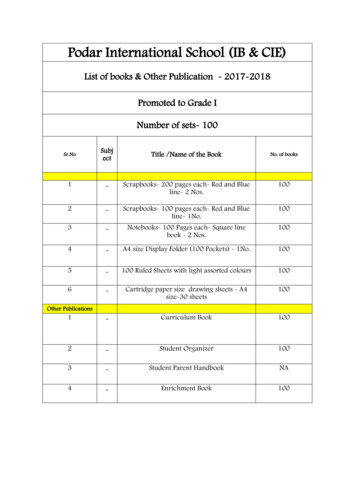

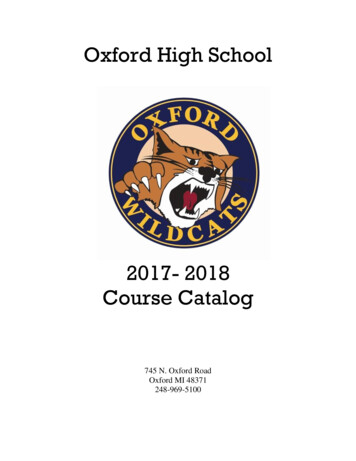
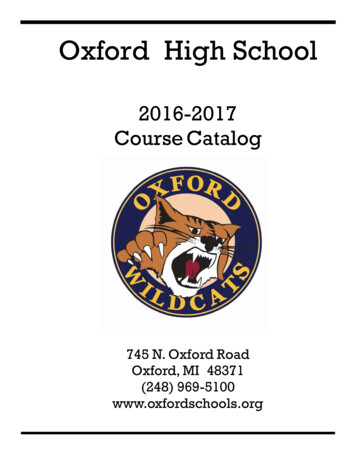
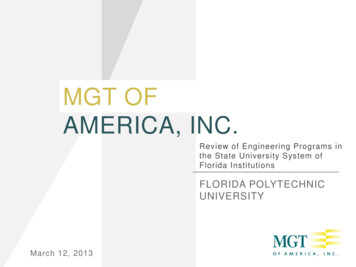

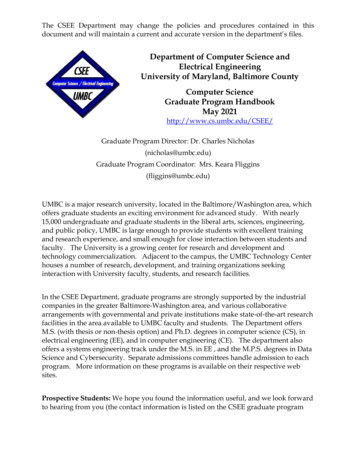

![Motorcycle Mechanic [MM] - CTEVT](/img/5/motorcycle-20-20mechanic-2010.jpg)
